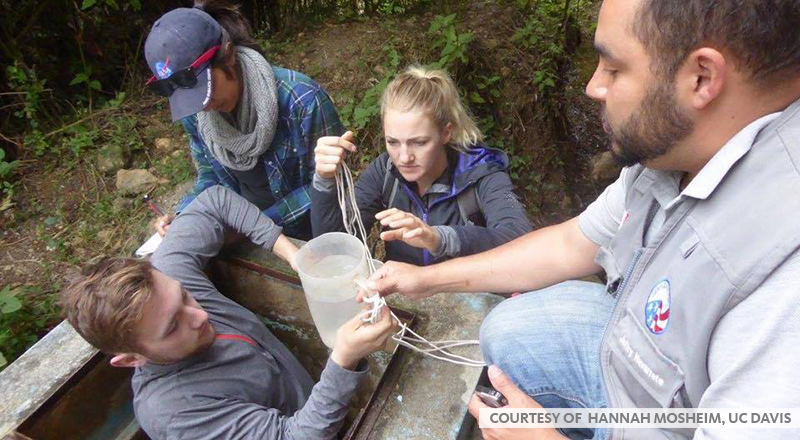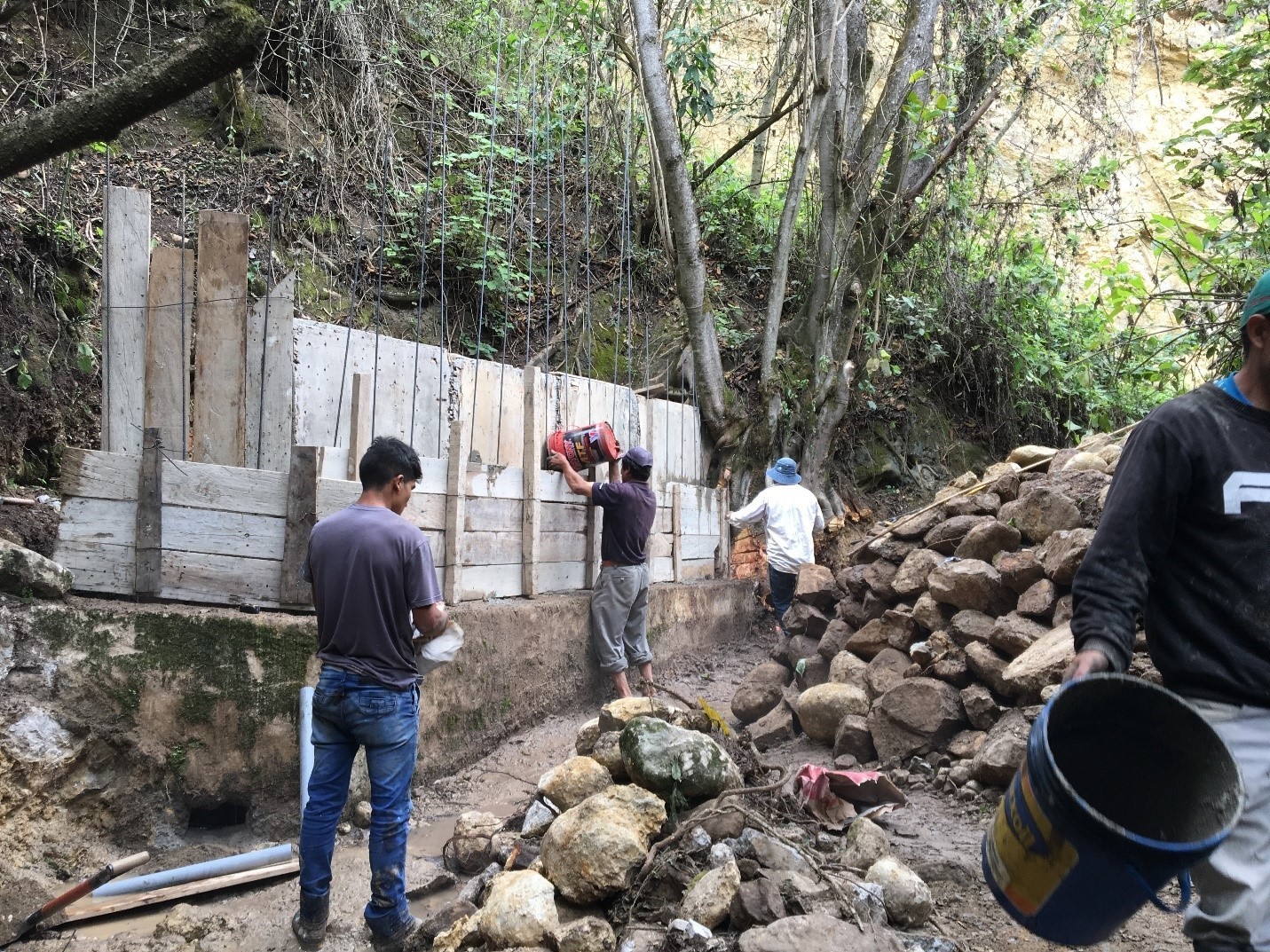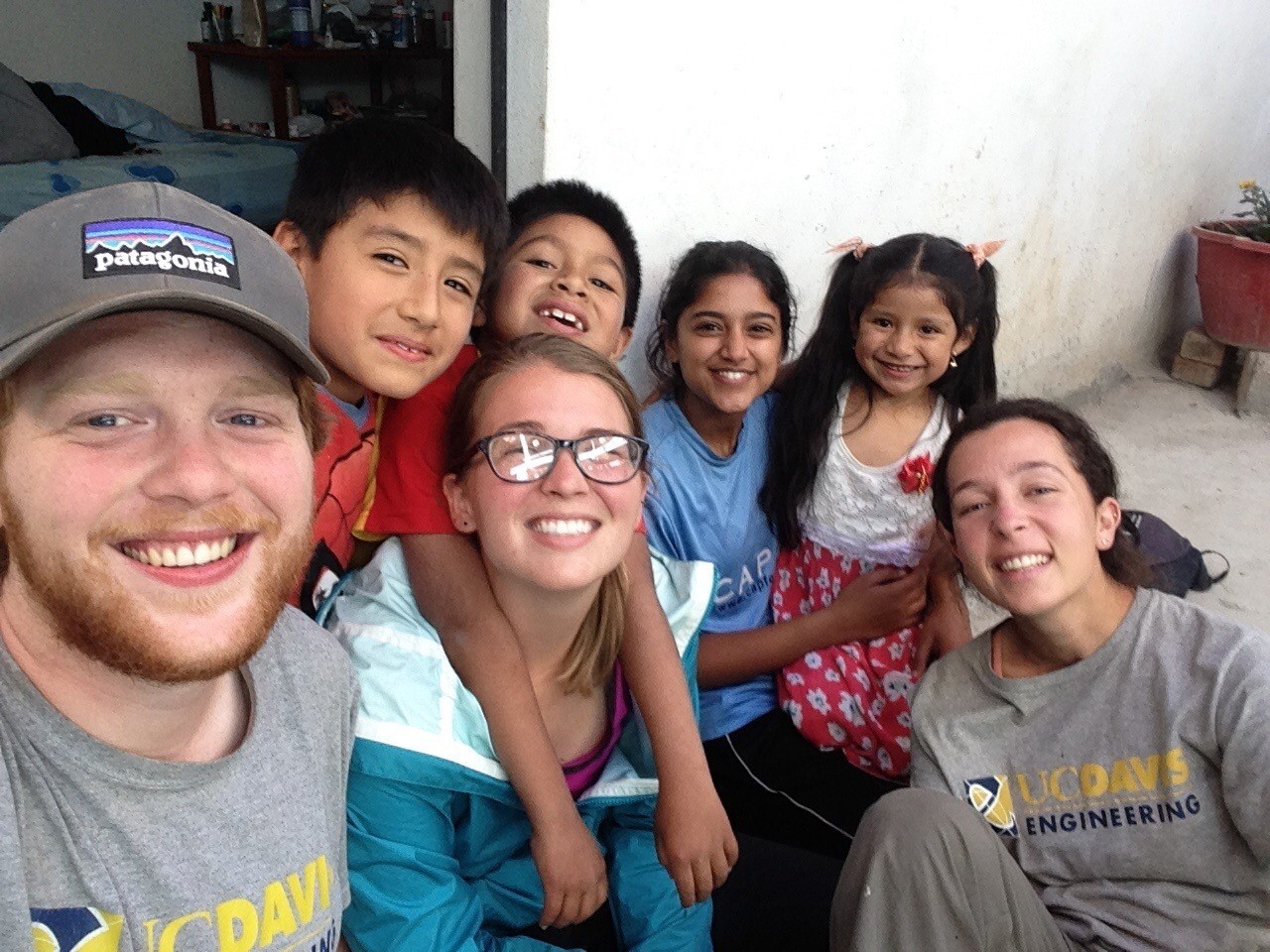
In many parts of California, we take flowing, clean water for granted.
But in many areas of the world, pipes that trickle with water are a luxury for thirsty towns. Even if there is running water, often it isn’t safe. At any given moment, half of the developing world’s population are sick from diseases linked to dirty water and bad sanitation, estimates the World Health Organization.
Engineering students throughout the UC system give their time and technical skills to tackle water supply and sanitation problems to improve health and well-being of people in the poorest parts of the globe.
Indeed, it’s charitable and humanitarian. “Also, it gives us a real-world experience,” said Evan Barnell, fourth-year mechanical engineering student and member of the UC Davis chapter of Engineers Without Borders (EWB).
EWB’s International Community Program collaborates with more than 500 projects in 40 countries. Water supply, civil works, sanitation, agriculture and energy projects are driven by 275 chapters across the U.S, including nine of the 10 UC campuses. They partner with communities to identify needs and build solutions.
For all EWB projects, student engineers are partners with community leaders and members. They identify the needs, provide the labor, and all supplies are provided locally.
In June, Barnell will make his third visit to La Huaylla, Cajamarca, Peru, a semi-rural community of about 1,400 people in the northwest part of Peru in the Andes. “The lower half of La Huaylla lies on the main highway through the region and so is more urban,” said Barnell. “The upper half lies on a rugged dirt road with modest adobe and brick houses interspersed between farm plots.”
“The people there don’t have much,” he said. “Life there is simple, and the people are happy with what little they have.”
But in 2016, the UC Davis EWB group found a failing water distribution system there that provided only four to six hours of water a day to some 250 households – far more homes and people than when the system was build 30 years ago.
In La Huaylla, spring water flows through holes in the mountain and into three spring boxes, forming a reservoir that collects and holds up to 30 cubic meters of water (less than 7,000 gallons). Water piped to the reservoir is drip chlorinated and piped to homes.

The UC Davis engineering team found the system severely deteriorated, collected GPS and water quality data, interviewed residents about water need and usage, and went back to Davis to draw up a plan to repair the system.
Old and new team members returned to La Huaylla last year to lead a four-week project to reconstruct the system. It wasn’t without glitches, recalled Barnwell.
They found dirt and sediment built up in spring boxes over the years, restricting water flow more than they had anticipated. Boxes had separated from the hillside, and there were many places where contaminants could easily enter. In a ravine north of La Huaylla, animal waste from neighboring farmland accumulated and flowed in spring boxes.
The old box also was too small, resulting in a significant portion of clean water exiting from the top of the box. The team made the box bigger, stronger and better attached to the hillside to ensure its longevity and production of uncontaminated water.
“We also discovered several holes in the pipes which was the likely cause of the large amounts of fecal coliforms and bacteria we found in our initial water quality tests,” said Barnell. “Although not in our original plans, we replaced all the lines to reduce contamination sources and restore the water system’s capacity.”
Now, the spring boxes collect much more water than before the reconstruction and the reservoir flow rate has more than doubled from 1.5 liters to 3.4 liters per second.
While the hands-on work was certainly critical, equally important was the time the students spent with families. “We did as much as we could to learn the culture and build relationships,” said Hannah Mosheim, a third-year UC Davis chemical engineering student and current director of the EWB Peru water project.

A goal of the EWB projects is sustainability, said Mosheim, so the students don’t just advise how to maintain structures and systems, they also teach about water conservation and the importance of hygiene.
A final exercise for the 2017 project with a local school was to create a mural in the school to remind children that “Water is Life.”
Mosheim and Barnell will be part of a UC Davis contingent in June to build an 80 cubic meter reservoir, which includes adding two kilometers of pipeline. The project will nearly quadruple the town’s current supply, especially during demand hours, and accommodate a population that is expected to grow in the next three decades.
“The improvements will allow the community to have cleaner water for many years to come,” said Mosheim.
Lack of toilets a breeding ground for disease
Another group of UC Davis students, including Allison Tearjen, a third-year chemical engineering major, is headed in June to Choquecoa-Parque Colani in Boliva for an EWB project to develop ecological latrine to a community that has no sanitation system.
More than two billion people don’t have basic access to sanitation, and children are the hardest hit. Diarrheal disease, stemming from improper sanitation are the second -leading cause of deaths among the young in developing.
“I feel as though if I can have an iPhone in my pocket, the very least I could do with my engineering skills is give someone a restroom,” said Tearjen, who is project director for the UC Davis EWB team.
It will be the students’ “assessment” visit to the village, where they will gather technical data, including soil and water sampling. Ultimately, they plan to design a system of latrines—or outhouses-- and devise a pit emptying and maintenance plan that is practical and safe for the community.
Design must consider many factors, including distance from groundwater and surface water to decrease the risk of groundwater pollution. Like all EWB projects, however, a key part of the assessment is establishing connections with the local community to understand the culture, needs and challenges, said Tearjen.
In the end, the goal is building a feasible and long-lasting system that is community-owned and operated. “During this trip, we will also teach the community about eco-latrine basics, operating the latrines and removing compost, as well about sanitation and hygiene,” she said.
Turning agricultural waste into energy
Waste can be turned into a good thing, and in Pococi, Costa Rica, UC Riverside engineering students will help farmers convert agricultural waste into energy and fertilizer for crops. At the same time, the biogas technology project, will reduce greenhouse gas emission and waste water into the environment and replace firewood as an energy source.
The members of the UC Riverside EWB chapter currently are working on a technical design of biodigester tanks and micro-controller systems for Costa Rican farmers and families whose health, land and livelihoods were at risk because of exposure to and contamination from animal waste.
The project adds a new phase to a biogas initiative of the Instituto Tecnológico de Costa Rica, which has built systems for 38 families. The UC Riverside students plan to go to Costa Rica in September to demonstrate an improved and more robust biogas system, and, eventually in January of 2019, install up to 17 new systems, said Amani Sastry, a third-year bioengineering student and the EWB chapter’s project director.
Even before it goes abroad, the team and its design already has won praise locally. In April, the team won top honors at the Metropolitan Water District of Southern California’s Showcase competition for a plan to help rural families start small pig farms and use the pig waste and biogas systems to produce gas for cooking and fertilizer for farming.
The plan for Costa Rica includes enlarging the previous systems to increase the biogas to meet the community’s demand, change wooden structures to concrete and steel so they don’t rot from the extreme humidity, add water tanks to conserve water used to clean animal pens, add meters to exact biogas volume, add stations that convert biogas liquid waste into fertilizer, changing inefficient stoves, and, importantly, educating people about environmental and health benefits of the system.
“But the one piece missing from our work is the connection with the Costa Rican community, which is why I am excited to have the team of students finally visit this beautiful country and experience first-hand the impact we will have,” said Sastry, as she looks forward to the fall visit.
The group’s long-term goal, she said, is to provide a biogas model to areas of the world with similar problems and to promote sustainable farming.
Robotics to protect clean water
The UC Riverside EWB chapter also is developing and testing wireless automation – robotics – that can be applied to farms.
The students’ Project Aurora involves building a robotic submarine and integrating water quality sensors they’ve developed into it.
“The goal is to have a submarine monitoring a body of water for any potential contamination,” said Aaron Aliaga, a third-year chemical engineering student and leader of the robotics project for the UC Riverside EWB chapter. “For example, too much fertilizer can cause nitrification which can lead to algae blooms. Algae blooms have devastating impact on the ecosystem, capable of creating dead zones. The oxygen is depleted from the water killing much of the fish there and impacting the fishing industry. This is one application of robotics and water quality sensors.”
For now, the group’s technology will be tested close to home, before the students propose to take it abroad.
